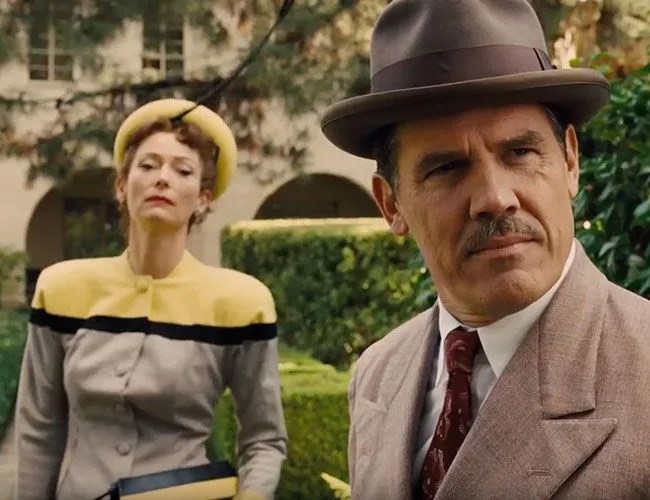The Coen brothers, of all people, need a win. Hail, Caesar! hits theaters tomorrow, the latest film both written and directed by the brothers since 2013’s criminally underrated Inside Llewyn Davis, which managed to flop harder than The Big Lebowski upon release. In the fourth entry in their unintentional series of kidnapping films (alongside Fargo, Raising Arizona and The Big Lebowski), the brothers are decidedly less dark, eschewing stark, sudden violence (a touchstone of their filmography) and easing into what feels like a homecoming. The film thumbs its nose at the worst parts of Hollywood, standing as a strong defense of the quirky, non-superhero flick.
The gist is simple. Eddie Mannix (Josh Brolin) is a “fixer” for a Hollywood production company in the 1950s whose leading man (George Clooney) goes missing mid-shoot. From there, the plot smoothly forks into two concurrent stories: Mannix’s pseudo-noir search for his missing actor, and the madcap film-within-a-film happenings at the studio. Instead of spanning an entire odyssey (as in Oh Brother, Where Art Thou?), Hail, Caesar! carries itself at a refreshing clip; the entire plot occurs over the course of a few days.
Brolin’s Mannix remains a largely monotone pillar despite a glut of screen time, and headliners Scarlett Johansson, Ralph Fiennes and Tilda Swinton provide superb performances in the few scenes they’re allotted. But the most fully developed characters in the film are the sets and soundstages themselves. While the Coen brothers have a penchant for landscape, often favoring vast, open settings (Llewyn Davis’ urban sprawl, Fargo’s Midwestern tundra, True Grit’s Southwestern wilderness), Hail, Caesar! revels in the confines of backdrops and backlots. Clunky close-ups and sudden, zoomed-out wide shots exhibit their great, skeletal fakeness, as if to remind viewers, in a delightfully meta fashion, where they really are.
Director of Photography Roger Deakins’ work (most recently Sicario, and basically every Coen brothers film) is par the course here, and it’s fun to see how he tackles the added challenge of lighting everything as true to the time period as possible while dunking the whole mess in a vibrant, gold-tinged palette flecked with occasional bold, primary details. Two synchronized set pieces crack into a familiar visual surreality, not unlike the Dude’s hallucinatory dream sequence in Lebowski.
Above all else, Hail, Caesar! is a story about putting faith into a failing industry. At one point in the film, a recruiter from Lockheed attempts to convince Mannix to switch his career from fixing in film to assisting in war making: “The industry you’re in — what’s the future there?” the recruiter asks. “What happens when everyone owns a television set?” In the 1950s the film industry was increasingly threatened by TV; today, much to the chagrin of Quentin Tarantino, an influx of consumption on even smaller cell phone screens continues the trend of removing butts from theater seats. This is forcing production companies’ reliance on the length and strength of their tentpole franchises; unless the Coens are secretly writing the next Avengers flick, where is their place in that world?
Hail, Caesar! has been a long time coming. Apparently the Coens first pitched it to Clooney right after Oh Brother wrapped, but sat on the idea for a decade while they explored the dark and dusky direction of No Country, True Grit, A Serious Man and Llewyn Davis. In contrast, Hail, Caesar’s ease and accessibility feel like a great reeling-in, a “just play the hits” show revolving around subject matter the brothers are quite close to. It’s their first film about film, and the approach is self-effacing in its depiction of the industry’s lunacy, and redemptive in the assurance of its inherent good, exposing the straightest beams (a loyal fixer, a good actor, a solid artistic concept) that keep it upright. Eventually, when the Coen Brothers complete box set is on a shelf (or available for download), Hail, Caesar! will be the refreshing change of pace, the moment when the brothers turned the lens on themselves.
